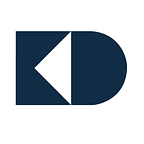Physical meets Digital
Involving users in the creative process has many benefits, from inspiring new ideas to helping to ensure there is a genuine market opportunity for your products or services. As a design researcher, there are a wealth of tools and techniques that you can use to engage with users, and with the growth of digital, this toolbox is rapidly expanding further.
With this expansion of possibilities, one of the biggest challenges can be deciding which research approach will work best for the project you’re working on. I’ve always been a great believer in taking a method-neutral approach to interpreting a brief: understanding the core objectives first and then deciding on the right blend of research tools and techniques, rather than being tied to a particular method or way of working.
For many of the briefs we work on, being face to face with users is invaluable in order to explore reactions to, and interactions with, physical products and packaging. However, we believe that blending digital research tools with more traditional, “physical” methods can add depth and different perspectives to a challenge.
Contextual Insight
Many of our front-end, insight led innovation programmes see our teams conducting contextual or ethnographic research with users: observing how people use products and packaging in their everyday lives. There is a huge amount of value in observing this first-hand, however, with tight timelines and budgets, our first hand presence is sometimes limited to a 2–3 hour snapshot of that user’s life.
Mobile apps like Crowdlab offer a great way of supplementing our understanding through running short mobile diary studies with users over the course of several weeks. During this time, we ask respondents to capture key moments in their day such as product usage occasions and shopping missions or conduct short tasks to introduce us to their life and home. Use of photos and videos in addition to text responses, provides contextual richness and is an engaging way to “meet” users virtually.
One of the key benefits is the real-time nature of this approach. It allows us to capture real moments in consumers’ lives that would be difficult to observe directly, and access this in real-time via an online dashboard. It’s also a great way of getting respondents and the project team immersed in the challenge before meeting in person at a more in-depth research session or creative workshop.
Co-Creation
During ideation sessions, we often look to involve users in some way, either to help inspire the creative process or to explore early stage ideas. Many of the projects we work on are global in scope, so getting involvement from multiple geographic markets can be vital in order to understand different perspectives and local challenges. We regularly run face to face creative sessions with users in different markets, but digital research opens up new and more nimble ways of working, which allow us to involve users as and when we need input.
Digital platforms like Toluna’s QuickCommunities allow us to recruit users in real-time to form a virtual community that we can tap into for the duration of a creative workshop or Sprint. Users are screened to reflect the target geographic market and specific profile (demographic, attitudes, lifestyle etc.) needed. We then engage with them throughout the project to share and get feedback on creative content.
This approach works particularly well when we take an iterative Sprint-based approach to innovation, as it allows us to be more responsive and nimble in terms of how and when we involve users depending on the creative direction the project takes.
Concept Exploration
When exploring early design concepts with consumers, one of the aspects we are often keen to understand early on is the likely impact from a “shopper” perspective, particularly in the FMCG space. The product and packaging briefs we work on in this space are often disruptive in terms of their intent: introducing a new product format or type of packaging. It’s important for our clients that we can assess potential shelf stand out, fit with category (codes), fit with intended brand positioning as well as identify any key barriers and motivators to purchase early on.
However, when exploring concepts at this early stage, we’re typically also looking to assess the user experience. Hence, face to face sessions often remain our favoured approach overall as this allows users to handle and interact with early physical models or prototypes. In this face-to-face setting, simple VR/AR digital tools offer a great way of providing a more realistic and contextual representation of how ideas might appear in a retail context. Different design concepts can be brought to life in a 3D retail environment side by side with competitor products, providing an immersive way of assessing shopper impact.
The Benefit Being
With all of these examples, what we end up with is a blend of digital and physical approaches that are tailored to meet the certain objectives of each brief. Understanding when best to use specific techniques, but without being tied to any fixed approach allows us to be creative and responsive in the way we work with users throughout the design process and deliver great results for our clients.
